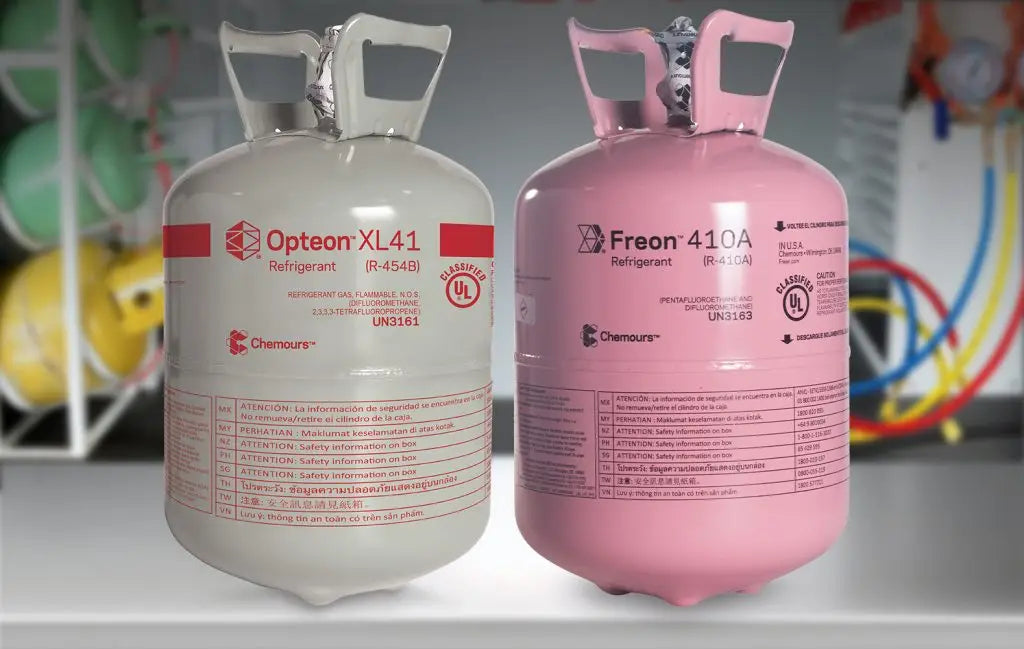As HVAC regulations evolve and refrigerant landscapes shift, contractors are at the forefront of implementing change. With more manufacturers and governments endorsing R-32 as the next-generation A2L refrigerant, it’s essential for HVAC professionals to understand what’s required to service, install, and transition to R-32 systems. This guide outlines everything contractors need to know about transitioning to R-32 equipment, from safety practices to tools and training.
Why R-32?
R-32 is a low-GWP refrigerant (675) and part of the A2L (mildly flammable) class. It offers:
-
Higher efficiency than R-410A and R-454B
-
Single-component composition, simplifying charging and servicing
-
Widespread adoption across Europe, Asia, and North America
Contractors who adopt R-32 early can gain a competitive edge and streamline training and inventory across equipment lines.
Training & Certification
While R-32 is easier to handle than blended refrigerants like R-454B, proper training is still essential. Contractors should:
-
Complete A2L refrigerant certification (where required by state or local codes)
-
Review EPA and AHRI safety guidance on low-flammability refrigerants
-
Participate in programs such as the ESCO Group R-32 Technician Training
Technicians should be familiar with:
-
Leak detection procedures
-
Safe ventilation practices
-
Proper labeling and system pressurization
Tools & Equipment for R-32
Fortunately, many tools used for R-410A can also support R-32 with minimal updates. However, contractors should confirm the following:
✅ Required Tools
-
Compatible manifold gauges rated for R-32 pressure
-
Recovery machines rated for A2L refrigerants
-
Leak detectors calibrated for hydrofluorocarbons (HFCs)
-
Vacuum pumps with spark-free motors
-
Properly rated hoses and couplings (UL 1963)
🔧 Safety Gear
-
Flame-proof gloves and eye protection
-
Ventilation fans for enclosed work areas
Installation Guidelines
R-32 system installation is similar to R-410A in terms of layout, but with enhanced safety precautions:
-
Ensure adequate ventilation during refrigerant handling
-
Avoid open flames or ignition sources during service
-
Use non-sparking tools in areas of possible refrigerant accumulation
Many OEMs provide specific R-32 installation guidelines with their equipment—review them thoroughly before work begins.
Transitioning Inventory & Customer Messaging
If you’re currently installing or servicing R-410A or R-454B systems:
-
Start transitioning inventory toward R-32-compatible parts and units
-
Train staff on the serviceability advantages of R-32 over blends
-
Update customer-facing documentation to include R-32 education
Position R-32 as a long-term investment for customers—emphasize its energy savings, widespread availability, and service simplicity.
Case Study: Early Adopters Share the Benefits
Contractors in regions like California and Florida, where state-led HFC phasedown rules have accelerated R-32 adoption, report:
-
Fewer service callbacks due to chemical stability
-
Simplified technician onboarding
-
Improved profit margins thanks to reduced inventory and faster installation times
As detailed in our global R-32 adoption report, these real-world outcomes align with the strategic shift to a single, proven refrigerant.
Final Thoughts
The transition to R-32 is not just a regulatory shift—it’s a business opportunity. Contractors who invest in training, safety, and streamlined operations now will gain long-term efficiency and market leadership.
For a complete overview of how R-32 compares to alternatives, check out our full refrigerant comparison.







